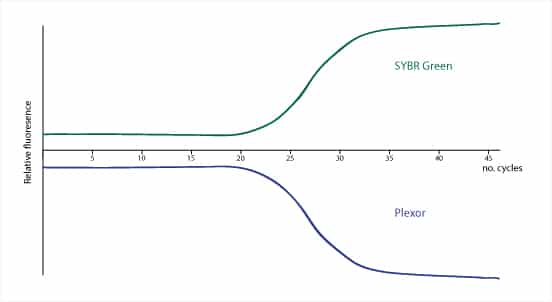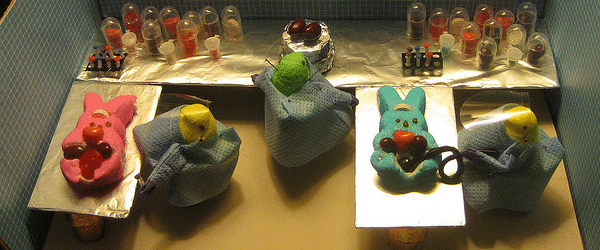Science is an expensive business and those who use high energy-demanding techniques may not even realize just how expensive they are.
The Cost of PCR
Let’s looks at PCR. You need to pay for the machine, all the ingredients including expensive enzymes, a freezer and a fridge for your ingredients, tubes and caps, not to mention everything you need to keep your sample from becoming contaminated and everything to actually do your experiments from gloves to pipettes to a sterilizable workspace. When you also factor in the cost of electricity, particularly for the PCR and the dozens of thermally controlled cycles it goes through, and the need for this electricity supply to be consistent, the idea of anyone who doesn’t have some solid grants behind managing to afford the whole shebang seems bleak. Some people have posted more cost-effective solutions but the electricity issue remains a problem. An external generator is an expensive solution but isn’t affordable to many parts of the world.
Cue Solar Thermal Polymerase Chain Reaction
Here we have a way of amplifying PCR for diagnostic purposes using only the power charge of a standard 5.5 Wh smartphone. It is fast, taking only 30 minutes, has an efficiency rate of 90-95% and minimal cross-contamination.
This is the first time that reliable amplification has been possible using only 80 mW of electricity, 2 orders of magnitude better than the next most efficient tech. The trick? Using the phone for temperature sensing, the sun for energy and a PCR machine with a magnifying lens and PCR chip. The light is focused by the lens and is then converted into heat by an absorber layer. The light is masked to varying degrees on the chip to create three specific regions. The purpose of this is to create three temperature zones for denaturation, extension and annealing. Using a microfluidic channel, the sample is cycled 35 times through these three different zones allowing for amplification of genetic material, a process called continuous-flow PCR.
The distance between the lens and the chip allows the machine to compensate for fluctuations in sunlight intensity ambient temperature and the system can track the movement of the sun to maximize the hours of the day when the PCR can be used. Makes a solar power phone charger seem very run-of-the-mill! And here is the coolest part! Using a smart phone plus an excitable dye that attaches itself to double stranded DNA, you can diagnose whether or not a certain genetic sequence is present and use this to diagnose illnesses such as viral infections. You might wonder about the power drain on the cell phone but an average smart phone can run through this process for about 70 hours before needing to be charged. So if the sun goes in, you’ve always got the smart phone as a back-up. On top of all this, the system runs on dried PCR ingredients that don’t require refrigeration.
Greener PCR
Solar PCR is designed for medical diagnostic personnel in resource-limited areas. By negating the need for a reliable flow of clean electricity, expensive refrigeration units and fresh ingredients, this system could revolutionize diagnostic medicine in poorer nations.
So while this PCR setup may not be applicable to those of us based in colder climates, or who already have access to shiny PCR equipment, there are some useful considerations to take out of this, namely that PCR can be expensive, not just in money but also in energy. Therefore, we’ve put together some top tips to help keep your PCRs nice a green:
1. DNA is not chicken
DNA is fairly hardy so there is no need to set your PCR to the infinite cycle of 4oC once it has finished running, just set it to an ambient room temperature of around 25oC and you’ll be saving energy without harming your experiment. At least do this for genotyping and other times the product doesn’t need to be in perfect condition and won’t be stored long term.
2. Off is the new on
While sitting at room temperature for a few hours won’t harm your PCR products, leaving the machine running unnecessarily for a long time can expend a ridiculous amount of energy. Plan your experiments so you’ll be about when the reaction finishes and switch off the machine as soon as it is done. Rather than running your PCR overnight or, even worse, over the weekend, do it first thing in the morning before you catch up on paperwork and emails
3. An alarm a day keeps the global warming away
Set an alarm to tell you when your PCR is done so that he machine isn’t left n forever. You can store your products in the fridge if you’ll be using them that day or in the freezer is you’re not. It’s best to keep the DNA in the dark.
4. Let’s play tag!
Whenever anyone uses the machine, they should tape their name to it. If you see a PCR machine running on the infinite storage cycle, take it out, wrap it in tinfoil and put it in the fridge with the name taped on. Let whoever owns it know. You can also share the machine, if a few of you need to use the same settings.
6. Your Machine Has an Appetite, Why Only Feed it a Handful of Tubes?
Whether you are doing your PCRs in a tube or plate, plan your experiments so that you are using as much of the machine as possible rather than running multiple different PCRs at different times. Plan for all the controls you need, and run all of the samples for a given experiment together.
7. Optimize your Reactions
Whether it is reducing the extension time, or decreasing the number of cycles, there may be ways to shorten your PCR. This has the added bonus of having to wait less time to run it!
8. Speed it Up
Another way to speed up your PCR reactions is to use faster enzymes. there are lots of different polymerases out there that have been engineered for speed such as those from Thermo Fisher Scientific.
9. Go for Green
When picking a PCR machine, look at how green it is. Over time, a more expensive green machine will use less electricity and, hey, you did your good deed for the day by ordering something that will make tomorrow better.
Do you have more ideas of how to green-ify your PCR? Leave us your tips in the comments below!
References:
Jiang L, Mancuso M, Lu Z, Akar G, Cesarman E, Erickson D. (2014) Solar thermal polymerase chain reaction for smartphone-assisted molecular diagnostics. Sci Rep. 4:4137.






